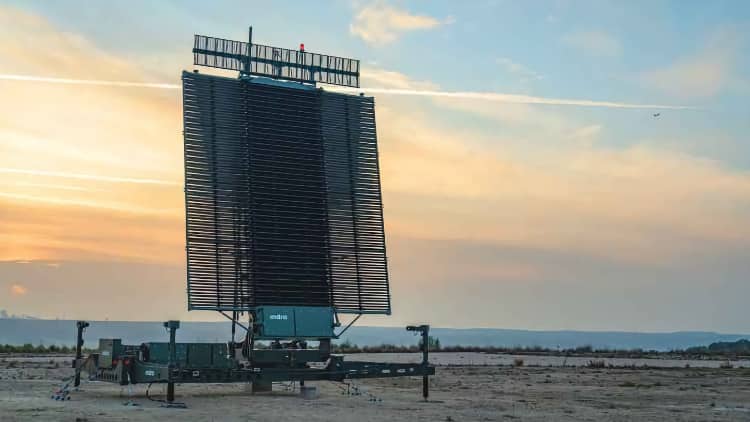The Diplomat
Indra’s 3D Deployable Air Defence Lance Radar (DADR) has successfully passed NATO tests certifying its ability to detect and track tactical ballistic missiles, the company announced yesterday.
The device, developed with the support of the Ministries of Defence and Industry, Trade and Tourism in its initial phase, has proven its capacity to provide early warnings to air command and control centres.
The tests were carried out at the Radio Evaluation and Analysis Centre (CEAR) of the National Institute of Aerospace Technology (INTA) in Guadalajara.
They verified the detection, track initiation and target tracking capabilities of the Lanza 3D DADR tactical ballistic missile radar.
The system estimated the different trajectory parameters needed to trigger offensive, defensive or intelligence actions, such as the estimated launch point, impact, interception, etc.
To verify these capabilities, a NATO NSPA (NATO Support and Procurement Agency) certification and test tool was used, consisting of a ground mission control station and a system located on a medium-sized drone that emulates the return of the radar signal reflected by a ballistic missile.
The LANZA 3 D DADR is the latest generation of Indra’s 3D LANZA family of radars and will be used as part of NATO’s deployable airborne command and control component (DAC) and by several Air Forces, including the Spanish Air Force and the Royal Air Force of the United Kingdom.
Indra is one of the Alliance’s leading suppliers of 3D radars, having won all tenders over the past 15 years. It is also one of the world’s leading suppliers of this technology.
It is currently working on the evolution of Eurofighter radars and has implemented the space surveillance radar used by the Spanish Air Force.







